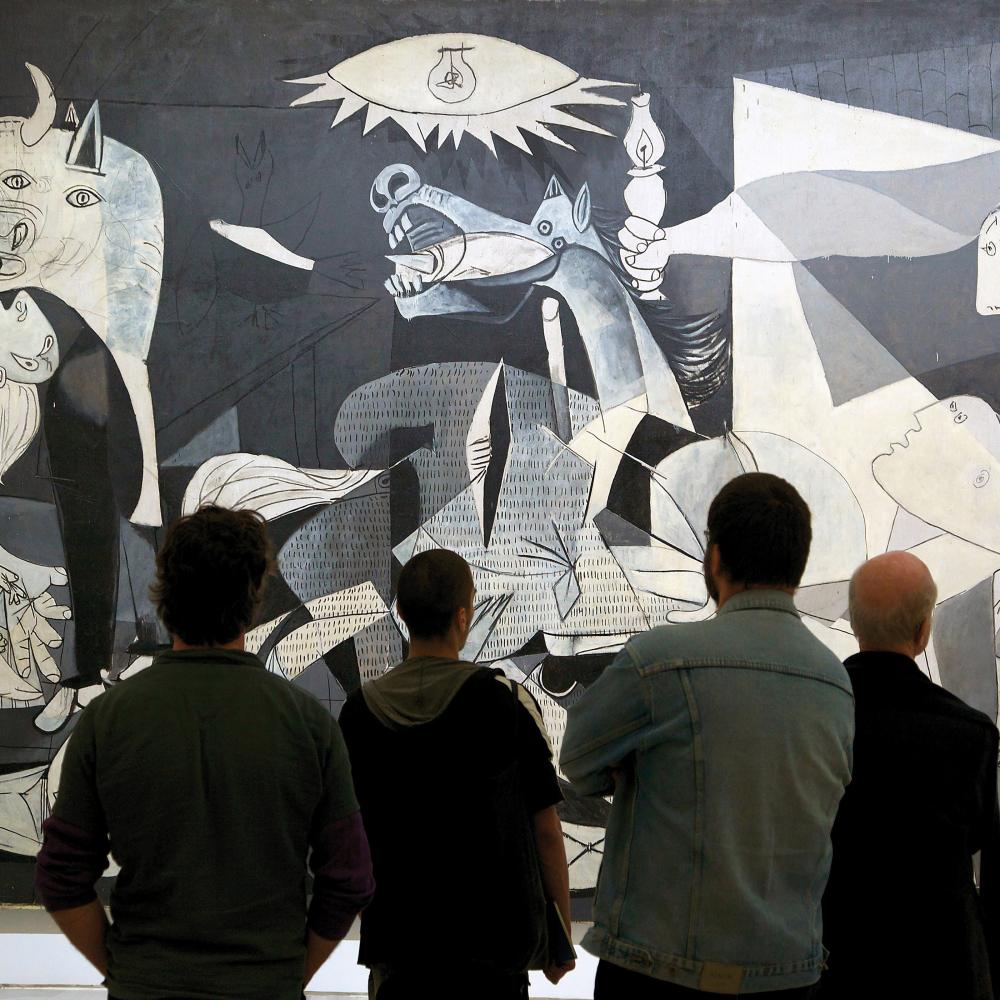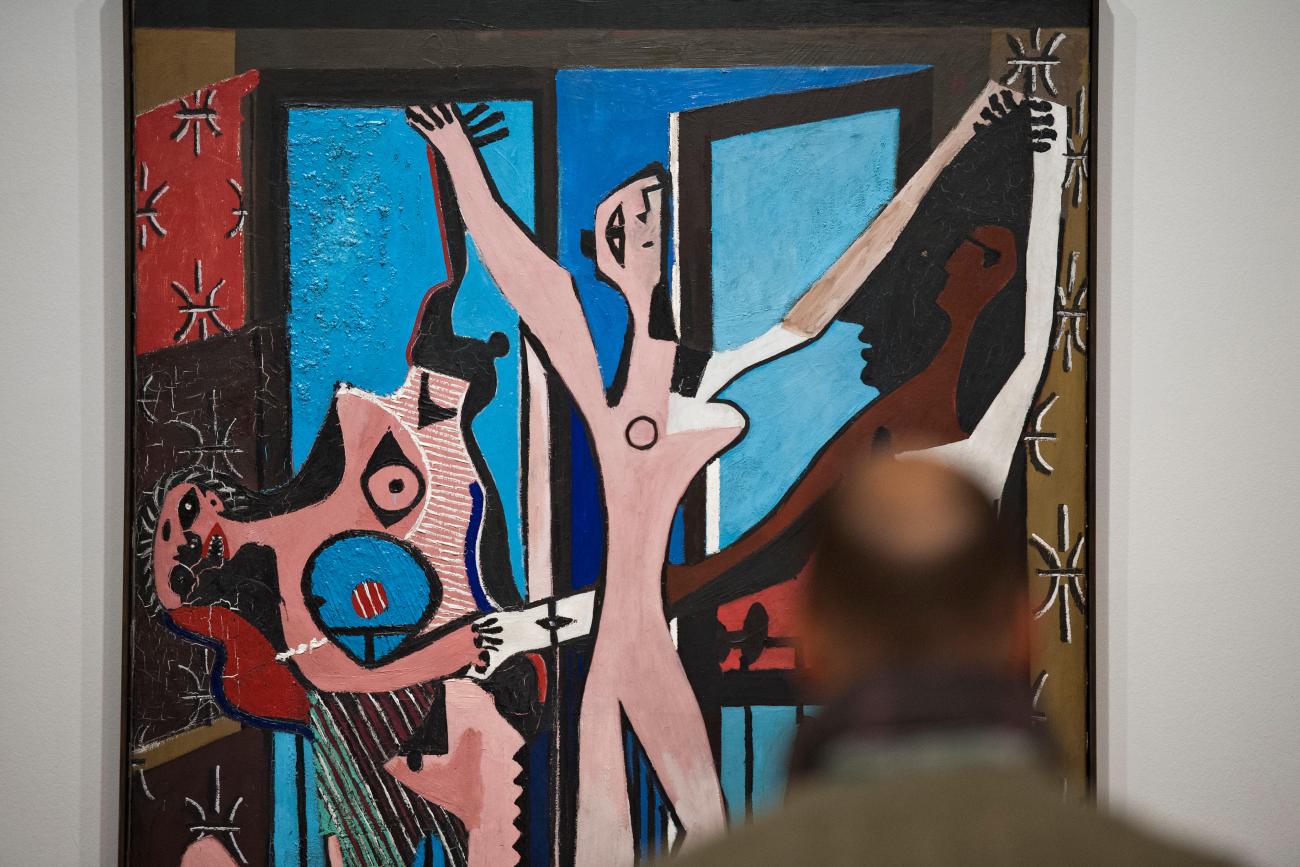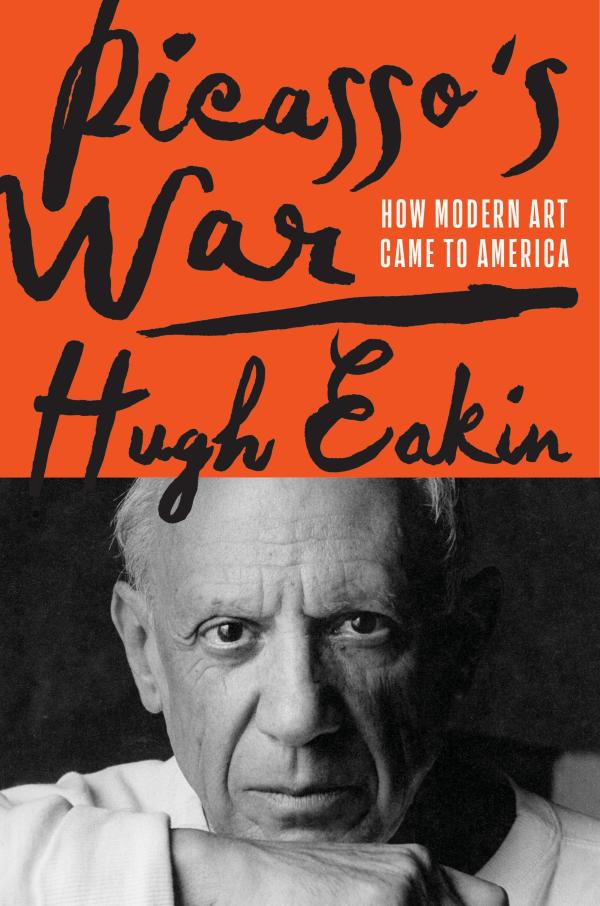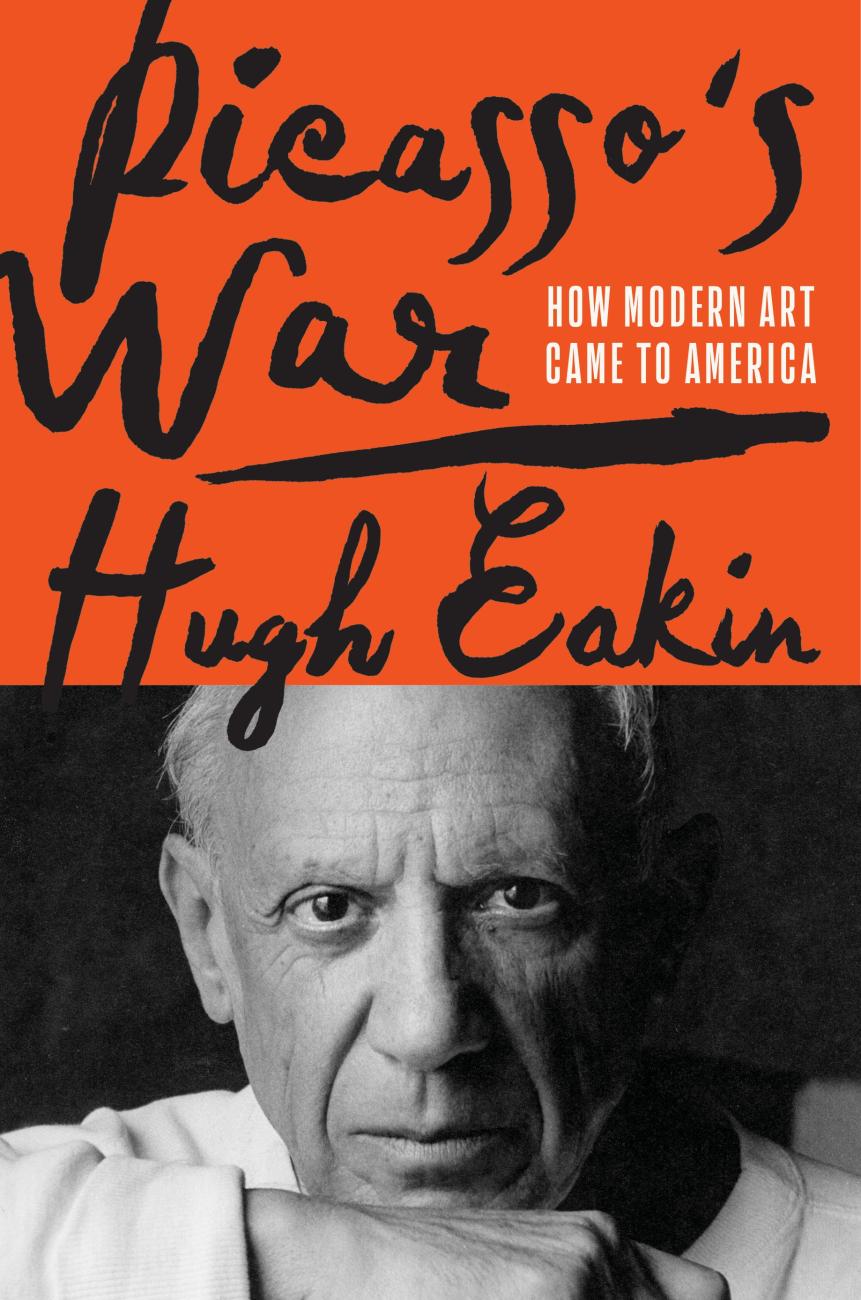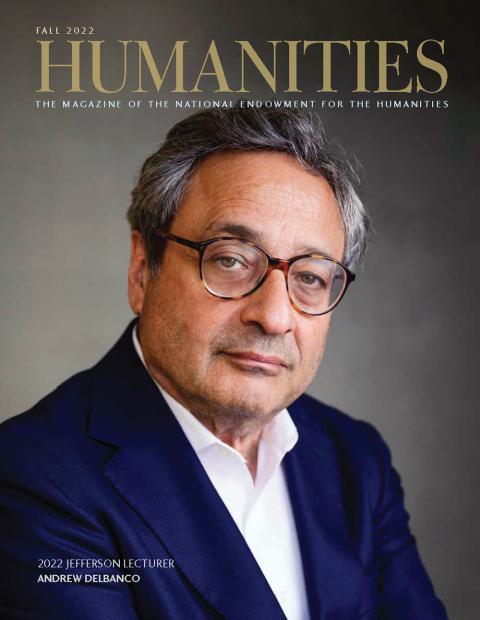The groundbreaking 1939 exhibition “Picasso: Forty Years of His Art” at the Museum of Modern Art was a great turning point in twentieth-century art history. While war raged in Europe, it traveled to museums in Boston, Chicago, Cleveland, Kansas City, New Orleans, San Francisco, and many other cities, forever changing how Americans thought about modern art. This excerpt from Hugh Eakin’s new book, Picasso’s War: How Modern Art Came to America, revisits the landmark show, its reverberations in Abstract Expressionism, and its spirited reception.
In recent years, there has been a block of Midtown Manhattan that, even in New York, stands out as a hegemonic empire of art and money. Walled in by lustrous expanses of glass and blackened steel, the Museum of Modern Art is a city-state unto itself. In a place where the only room to grow is up, it luxuriates in an ever-growing horizontal sprawl of some of the country’s most coveted real estate. On its board sit more billionaires than are found in all but nine U.S. states; its paintings alone, more than two hundred thousand artworks from all over the world, are worth more than the GDP of a number of small countries.
At its pulsing center is the work of a single artist, a figure whose ghostly presence seems to course through all sixty of the museum’s white-walled exhibition spaces, even in rooms filled with work created long after his death. In the museum’s inner sanctum, through the luminous foyer and up the escalators, across the floating glass-walled bridge to the fifth-floor galleries where the core of the collection still holds sway, is a very large room that—even amid today’s frequently shifting arrangements—continues to be defined by his art. Here, some of the greatest works of Picasso seem to become synecdoches for the museum itself. Flanking the entrance are two huge 1906 paintings that speak of a revolt about to take place. Then, on the far side of the room, dominating an entire wall, is the jarring act, in mid-progress: a huge tableau of naked giantesses who seem to be tearing down the foundations of Western art. Surrounding them is the glorious, disturbing aftermath: In 2021, this included not only Picasso’s seen-from-all-sides-at-once Catalan townscape and his defiantly unbounded bronze Head of a Woman, but also Louise Bourgeois’s haunting painted-wood figurines from the late 1940s and the twisted, terrified bodies of Faith Ringgold’s civil-rights-era masterpiece, American People Series #20: Die—reminding us that the revolt never quite ended.
But the vast Picasso Valhalla was not always thus. Once upon a time, the art that is now synonymous with twentieth-century American culture was ridiculed and shunned. For years, even the idea of creating such a museum, centered around this art and this artist, went nowhere. And when the museum did finally get its start, it was brought into being by little more than a society lady’s whim. Occupying cramped, rented rooms, it had no endowment and hardly any budget—and not a single Picasso to its name. Once upon a time, the cultural hegemon had struggled to survive.
For nearly thirty years, the effort to bring modern art to the United States was continually impeded by war, economic crisis, and a deeply skeptical public. It was a project that might well have foundered, and almost did, but for the fanatical determination of a tiny group of people.
***
“Picasso: Forty Years of His Art” opened at the Museum of Modern Art on a cool Tuesday evening in mid November. The previous day, one French and four British ships were sunk by German mines and torpedoes; that same week, the New York Times reported that “the bulk of the German Army . . . is in the West ready to take the initiative.” In Manhattan, though, events in Europe seemed far away in a season filled with other distractions. “When we tune off the war broadcasts,” a contributor to Harper’s Bazaar wrote,
We tune in on Alex Templeton, the blind pianist, with his malicious musical take-offs. . . . Féfé’s Monte Carlo is open again. There’s the new Martinique, with two crack Latin bands, voodoo gyrations, and drum pounders. . . . Carmen Miranda is ay-ay-aying at the Waldorf. Downstairs in the St. Regis, all is Hawaiian now. . . . The Met promises the most glamorous opera singer that New York has seen in years—the Czech soprano, Jarmila Novotna. And the balletomanes are discussing furiously Dalí’s “Bacchanale,” the new Massine symphonic ballet, “Rouge et Noir,” to the Shostakovich First, and Dick Rodgers’s “Ghost Town.”
And yet, for the some seven thousand guests who attended the opening night of the vast Picasso show—an exhibition that had been a decade in the making, and even then, had nearly been canceled by the outbreak of war—the shadow of world conflict hung over much of what they experienced, starting with the museum itself. Designed by American architects and completed just months earlier, the Modern’s long-awaited permanent home on West 53rd Street boldly proclaimed the arrival of the International Style in Midtown Manhattan. Yet the horizontal factorylike structure—a vivid departure from the city’s upthrusting Art Deco towers—had been directly inspired by the Bauhaus, long since proscribed by the Nazi regime. Indeed, the two most prominent Bauhaus architects, Gropius and Mies, had recently arrived in the United States after fleeing the Third Reich. (If Alfred H. Barr Jr.—the first director of the Museum of Modern Art and the mastermind of the Picasso show—had gotten his way, one of these men would have designed the museum.) As much as the building suggested an emerging new style, it also reflected a Europe that was rapidly disappearing.
But it was the museum’s contents that captured this tension most strongly. After passing through the building’s signature revolving doors, the guests were greeted by three floors of some of the most astonishing paintings created since the century began, a great many of them brought over from France just weeks earlier: giant standing nudes reinterpreted through the burly, squat volumes of West African sculpture; violins and guitars that seemed to disappear entirely into a profusion of intersecting lines and planes; comic stock characters from Baroque opera rendered with the exquisite realism of Velázquez—or the mind-bending geometries of a three-dimensional jigsaw puzzle; corpulent bathers transposed into a fugue of curves, eyes, and breasts; shrieking, contorted shapes of animals, women, and children filling a huge wall with primal expressions of terror. Here was modern art at its most concentrated and clamorous, rescued in the nick of time from impending doom.
Barr had made a point of stressing the show’s comprehensiveness, and, faced with more than 360 works of stupefying variety, many viewers found the presentation overpowering. (So much for the smaller show that Picasso’s dealer, the Paris impresario Paul Rosenberg, thought he was getting.) Yet the exhibition was not merely a novelty show or a grab bag of avant-garde tricks. With his usual taxonomic zeal, Barr had arranged the art in an improbably lucid progression of styles and idioms, initiating viewers in stepwise fashion into the new and difficult. Beginning with Picasso’s earliest paintings, the show continued chronologically, culminating, at regular intervals, in a series of defining moments: the early Moulin de la Galette; the Blue period Old Guitarist and Rose period La Toilette; Two Nudes, and then, bringing to culmination the first floor, that huge, terrifying rupture with all that had come before it, Les Demoiselles d’Avignon. Later floors took viewers through the “hermetic,” “analytical,” and “synthetic” stages of Cubism, through the monumental women of the early 1920s, the Surrealist pirouettes of the Three Dancers, and the rapturously colored Marie-Thérèse paintings, and finally, through the tortured Minotaur period to the apocalyptic horror of Guernica. On every wall was a continuing struggle between form and the way to express it, but also an exhilarating search for beauty.
The show was not without gaps. Apparently not yet over his old falling-out with the museum, the financier, collector, and former Museum of Modern Art trustee Chester Dale had refused to loan The Family of Saltimbanques, perhaps the very greatest of Picasso’s early circus paintings, which remained in his townhouse just blocks away. Gertrude Stein’s portrait, though Barr had optimistically put it in the catalog, was no more present here than it had been in Chick Austin’s far smaller Picasso show at the Wadsworth Atheneum in 1934. Also missing were the large group of sculptures that Picasso had promised the museum, but then left behind in Paris when he fled to Royan at the start of the war, thus omitting from the show a crucial dimension of his art. And then there was Rosenberg’s much-coveted Three Musicians, still stuck on a boat somewhere en route from Buenos Aires, where he had sent it to get out of harm’s way weeks before the war began. (It finally turned up in New York a month into the show’s run, and would be hailed as the last picture to be hung.)
But few viewers noticed. In Barr’s clarifying sequences, even a work as difficult as Guernica could gain powerful new coherence as the end point of many works before it. Because of its immense size, the painting was given a long gray room of its own, where it could be taken in from a proper distance, lit by hidden ceiling fixtures; adjacent galleries contained dozens of sketches, drawings, and study paintings as well as Dora Maar’s thrilling photographs of the work itself in eight successive stages, offering rare insight into how Picasso created it. If nothing else, few viewers in this setting could walk away indifferent or in reflexive disgust.
Here was Guernica’s true debut. Though the war that had provoked Picasso to paint it had already been lost—the Spanish Republic had finally conceded defeat to Franco’s forces seven months earlier—its aching, shrieking, unremitting protest against human atrocity was all too prescient of the one that had just begun. It would be Barr’s definitive 1939 show—rather than the Paris Expo in 1937 or any of the efforts to use it as propaganda for Spanish War relief—that would finally sear Guernica into the public consciousness and definitively establish it as one of the century’s most enduring statements.
Having worried to the last if “Picasso: Forty Years of His Art” would come off okay, Barr himself was wholly unprepared for the feverish enthusiasm for the show on which he had risked so much. Going in to the exhibition, he had reason to fear a hostile reception: There was the longstanding resistance of the American public to avant-garde art, and the consistently dismal experience of previous Picasso shows, from Stieglitz in 1911 on up to Hartford in 1934. And as recently as that same summer, the meager crowds that had bothered to see Guernica when it briefly toured the United States to raise money for Spanish War victims had been left largely nonplussed. And yet, amid the onset of a new world war, and the overwhelming interest in all the paintings the museum had managed to get out of Europe at the last minute, the show—and this astonishing anti-Fascist mural—had electrified the city. People, including many who never went to museums, were lining up to get in to the show in numbers that surpassed all previous records. Suddenly Picasso seemed to be everywhere—in newspaper headlines, on the cover of magazine supplements, in radio broadcasts. And despite having spent nearly his entire life outside the realm of politics, his work had become an emblem of defiant democracy in the fight against encroaching totalitarianism. Almost overnight, it seemed, the artist had been transformed from disdained Paris provocateur into hardy symbol of the American future.
But it was a matter of style, too. In Vogue, Frank Crowninshield, the longtime Condé Nast editor and founding Modern trustee, argued that Picasso’s art captured the “strange and wholly new order” of feminine beauty in contemporary society. In Fifth Avenue window displays, the advent of Picasso-themed clothing was already taking place. To show off its winter 1939 collection, Bonwit Teller matched Cubist-faced mannequins with replicas of paintings from different phases of Picasso’s career: The Blue period Absinthe Drinker was paired with a Persian blue coat and furs; in another window, the multihued Girl before a Mirror inspired a “stained glass” patterned evening dress. Bergdorf Goodman went further, borrowing seven actual Picassos from Walter Chrysler Jr.—lesser paintings from the artist’s Blue, Rose, and neoclassical periods—to hang next to ermine and sable coats. Whether Picasso’s work was understood or not, the onetime enfant terrible of the bateau-lavoir was suddenly, to Barr’s dismay, a mainstay of American fashion.
But there were also signs that the paintings had begun to tap deeper currents in the American experience. “It is his vital will to change . . . which reflects the most profoundly characteristic urge of our time,” the young critic Andrew C. Ritchie wrote in Burlington Magazine. Titling his take in the Partisan Review “Picasso: 4000 Years of His Art,” George L. K. Morris argued that the show “demonstrates how the accelerated tempo of today has compressed a whole cultural cycle into a single life-time.” In an unsigned editorial, even the New York Times weighed in, with clumsy discomfort, on what Picasso meant to twentieth-century culture. “Modern art, with all its baffling affirmations, its sloughs into chaos and unintelligibility . . . is the logical, again the inevitable, product of our time,” the Times’s editors wrote. “And so Picasso—although we are certainly not called upon to approve everything he does, and may well turn in dismay or frank disgust from some of his art’s grotesque phases—Picasso should be given his due.”
For viewers prepared to take on the full measure of the work, the show seemed to hold out the prospect of a new turn in American culture. In a letter published in the New York Herald Tribune, one reader called it “the most important art event in America since the Armory Show”—the great 1913 exhibition that was often said to have introduced modern art to the United States—chiding the paper’s own critic for not grasping its significance. “This stage of art is merely a step toward abstract art,” the reader added with uncanny prescience. Indeed, the show became a turning point for several of the future leaders of the Abstract Expressionist movement. Willem de Kooning called the presentation “staggering”; Roy Lichtenstein, who was still in high school when the show opened, would keep going back to Barr’s exhibition catalog for years after. Louise Bourgeois, at the time a recent arrival from Europe herself, found Picasso’s art so entrancing that she was unable to paint for a month: “Complete shut down,” she wrote.
For many of these artists, the show seemed to throw down a challenge. For years, a handful of American painters, including Stuart Davis, Arshile Gorky, and John Graham, had been arguing that Picasso needed to be contended with. “All painting after Picasso is after and can not be before,” Graham had said in the early thirties. But they were in a minority, and for much of the thirties, as the American art world went elsewhere, few had paid much attention. Now it was clear for all to see: Artists in the United States would have to take account of what Picasso had done and find a new direction. “Another artist cannot begin at the point at which Picasso ends,” concluded the art historian Robert Goldwater, who was also Bourgeois’s husband, in a widely read review of the show. Goldwater’s insight would, in various ways, come to haunt the painters who came to maturity at midcentury. Years later, Jackson Pollock’s partner, Lee Krasner, recalled how Pollock once picked up his dog-eared copy of Picasso: Forty Years of His Art and threw it across the room in frustration. “God damn it! That guy missed nothing!” he shouted.
From the book Picasso's War: How Modern Art Came to America by Hugh Eakin. Copyright © 2022 by Hugh Eakin. Published by Crown, an imprint of Random House, a division of Penguin Random House LLC. All rights reserved.

